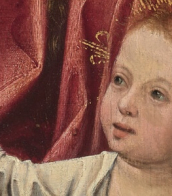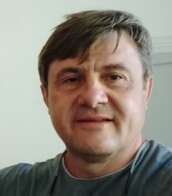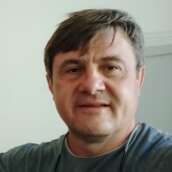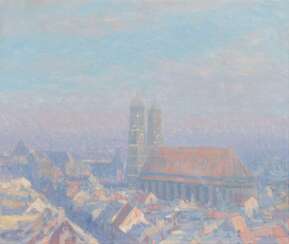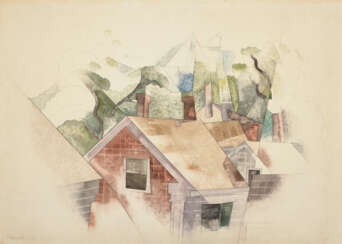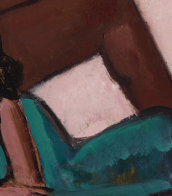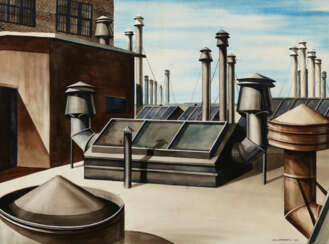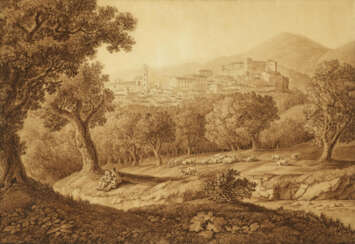city rooftops
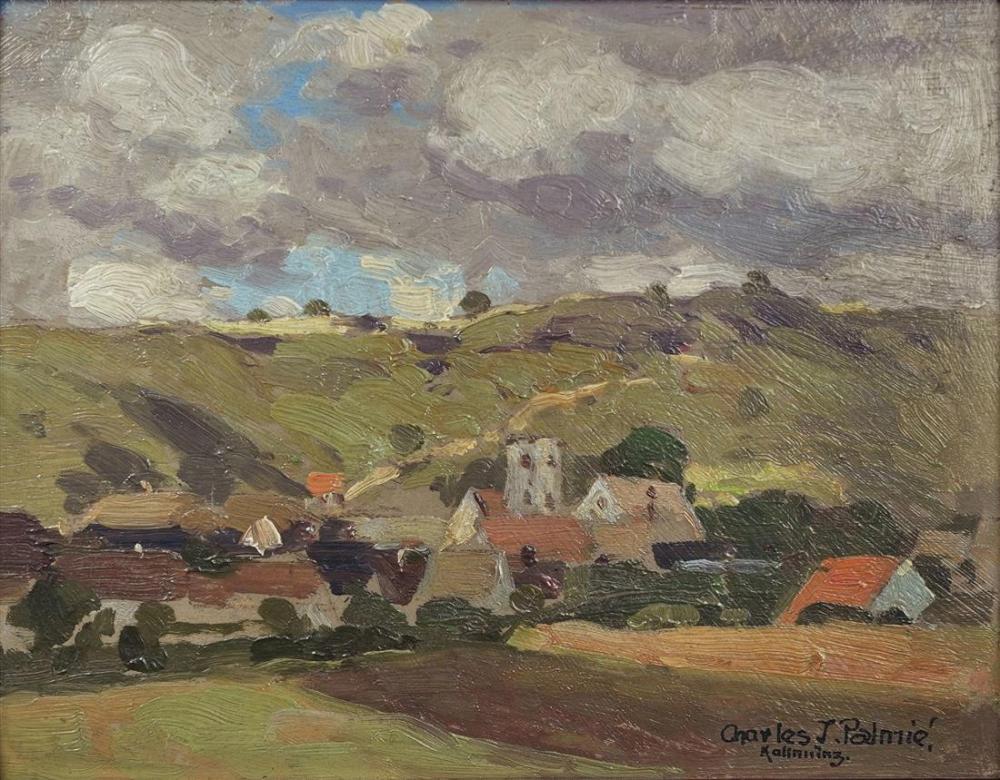
Charles Johann Palmié was a German painter, one of the pioneers of German Modernism and Neo-Impressionism.
He studied at the Dresden Academy of Fine Arts, traveled and worked extensively, specializing in landscapes. In 1901 Palmie and his artist wife opened an artists' hotel in Kalmunz, Germany. Soon an entire colony of artists formed there, numbering up to forty people, many of whom lived there permanently. After Wassily Kandinsky and Gabriele Münter visited the hotel in the summer of 1903, the Kalmunz colony became the talk of the art world.
Impressed by the works of Claude Monet, the artist traveled to France in 1905, where a meeting with the master himself played a decisive role in the further direction of Palmie's work. In France, he spent much time studying Neo-Impressionism, pointillism and monochrome painting, and created many landscapes.
In 1909 Palmie, along with Vasily Kandinsky, Alexei Jawlensky, Gabriele Münter and others, became one of the founders of the Association of New Artists of Munich (Neue Künstlervereinigung München or NKVM), an expressionist art group in Munich. This group later evolved into Der Blaue Reiter ("The Blue Rider"), but without Palmie's participation.
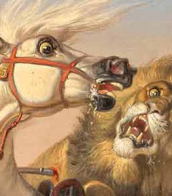
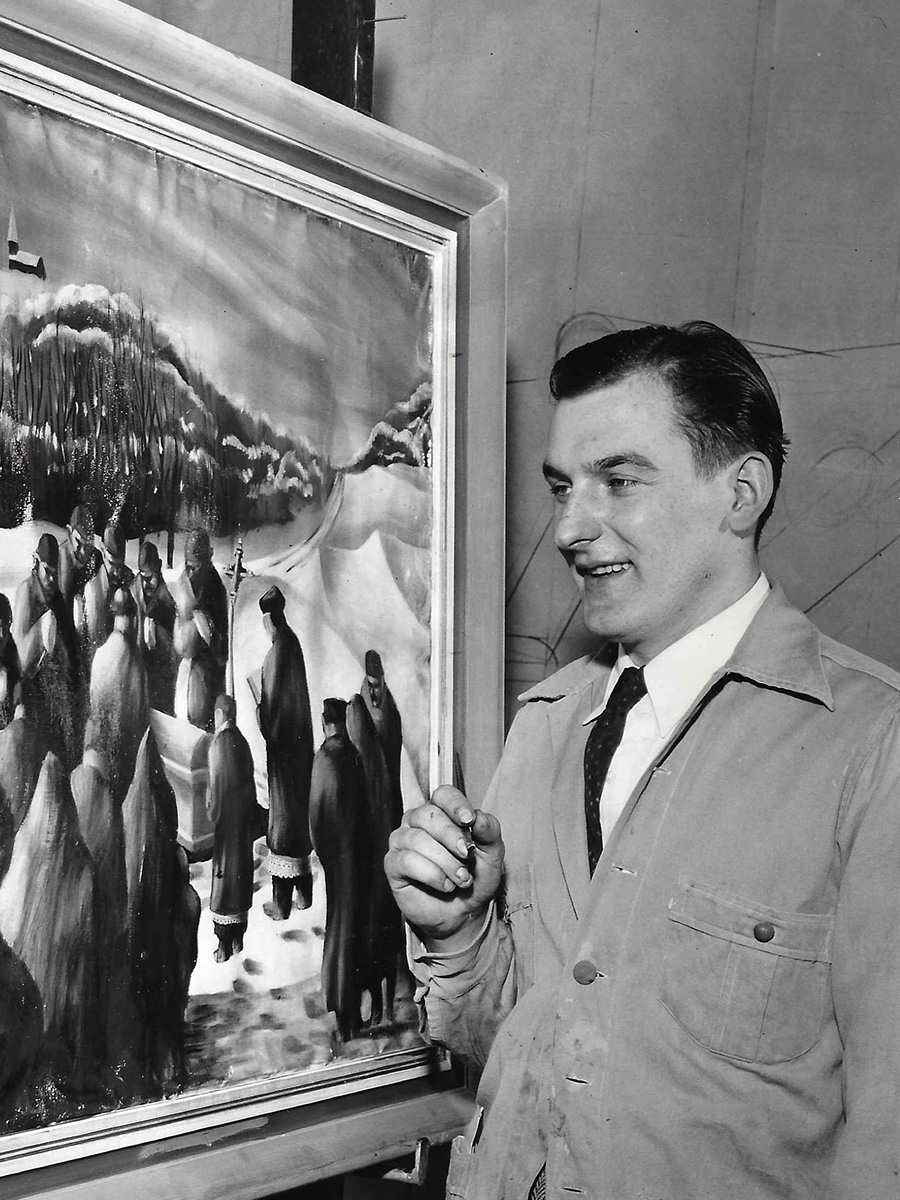
Edmund Lewandowski was an American pre-cisionist painter. He is known for creating murals in public buildings, and from 1942 to 1946 he made maps and camouflage for the U.S. Air Force.
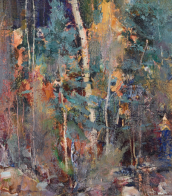
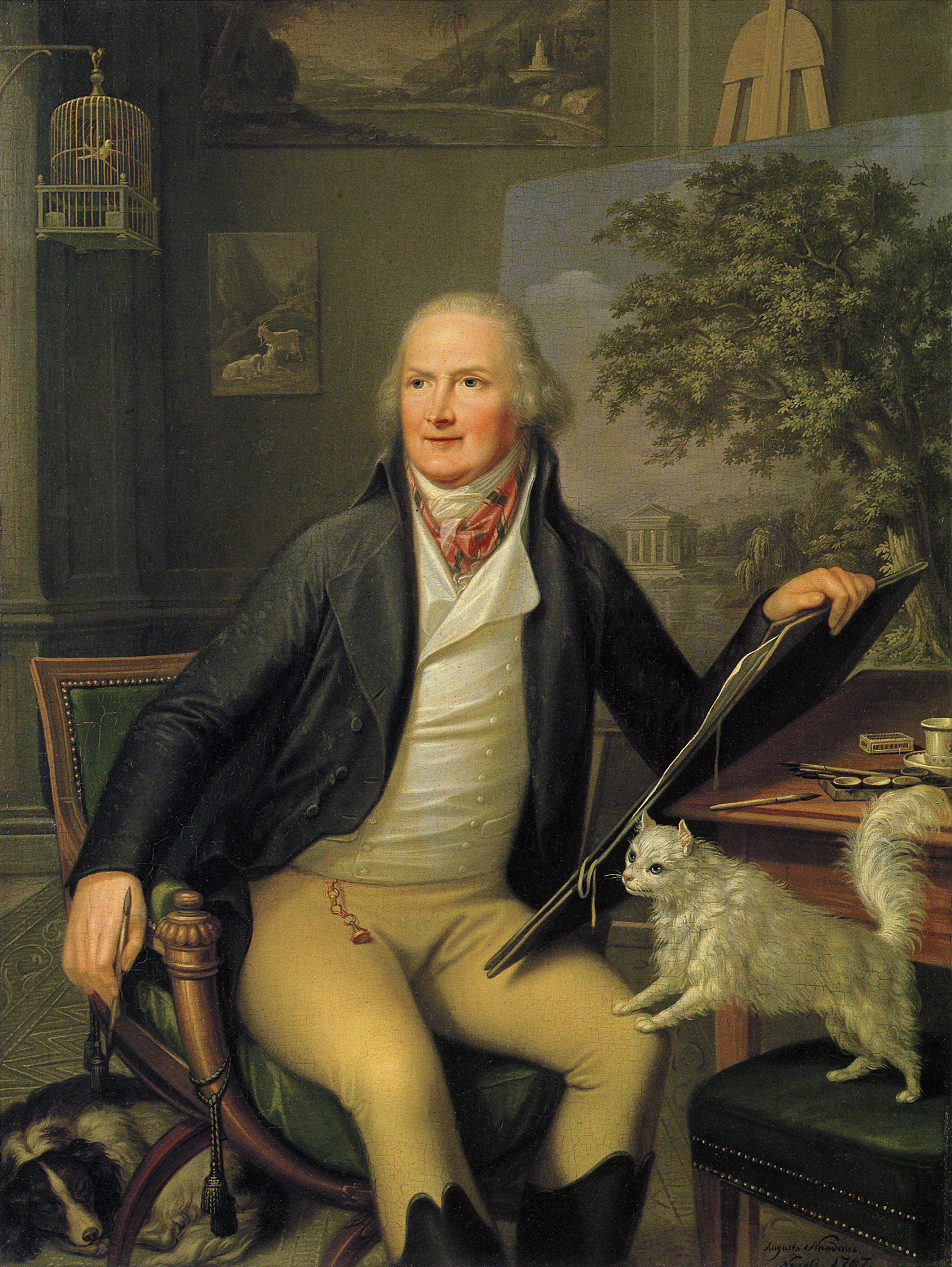
Jakob Philipp Hackert was a German painter of the second half of the 18th and early 19th centuries. He is known as a landscape painter and printmaker, a representative of neoclassicism and romanticism.
Hackert reached the peak of creative activity in 1770-1780. He was recognized by the European aristocracy, and for a time served as court painter to King Ferdinand IV of Naples, as well as receiving commissions from representatives of the Russian imperial family, such as Empress Catherine II and the heir to the throne, Paul Petrovich. His work, according to critics, was characterized by high craftsmanship and aristocratic elegance.
